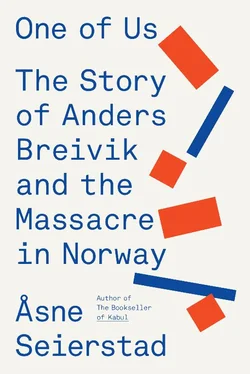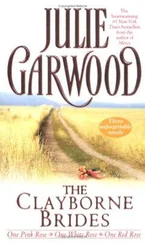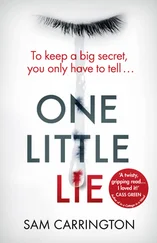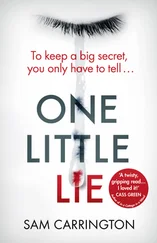The four classmates found each other through a shared obsession.
They entered their teens in the golden age of hip hop, and lapped it up. They listened to rap at home, on their Walkmans on the way to school, and they went to concerts at the punk club Blitz. Anders practised his breakdance spins in the blue garden. He overcame his previous reluctance to join in the dancing competitions in the basement, throwing shyness to the wind.
The music originally created in the Bronx in the late 1970s took Oslo by storm. The breakbeat loops of funk, disco and electronica were scratched over and over again, with rhythms marked by drums, bass and guitar. ‘Hip hop, don’t stop’. DJs were the new heroes, and with the needle in the groove they moved the vinyl records back and forth; there was cutting and phasing, crossfading and sampling. The turntable had become an instrument in its own right, and local Oslo rappers gradually emerged, singing about their own reality of teen life in the city.
The music was raw and fast, and frequently aggressive. The first rappers in the Bronx had an anti-violence, anti-drugs, anti-racism message, and hoped that hip hop would replace street violence. People would meet to party, not to fight. Later on, the music often came to validate and glorify street violence and gangsta rap was often sexist and racist in nature, its words riddled with references to drugs. Hip hop was a lifestyle with seemingly simple rules, as explained by KRS-One and Marley Marl, among the first rappers from the South Bronx: ‘Hip is the knowledge. Hop is the movement. Hip and Hop is an intelligent movement.’
Anders strove to be both the hip and the hop . Hip meant being up-to-date and relevant. Keeping up, getting it, being shown respect. As for the hop part, he practised hard on the paved path that crossed the grass outside his block of flats. He tried breaks and spins but never pulled off a headspin or backspin. He hadn’t enough rhythm or body control to be a good dancer.
Perhaps he could be a rapper? After all, he kept a diary, writing down his thoughts and experiences like the rappers did. But he hadn’t got the right sort of voice for rap; it was high and soft, like a girl’s.
So he opted for hip hop’s third form of expression: graffiti.
If breaking was visual rap in three dimensions, then graffiti was frozen breaking. The letters twisted, just as the dancing body did. To produce fine lines you had to let your body sway, readying yourself so the rhythm travelled from your body to your hand as it directed the aerosol paint can at the wall.
Graffiti tapped into the pulse of growing bodies. The lines on the wall were like them: angular, hard, insistent. The motifs had to involve speed and movement, be tough yet playful. But it was also a culture of performance and achievement. Everything was judged and then approved or rejected. If you had a good style and some original designs, you could mark yourself out from all the anonymous urban youths and shine a little.
* * *
In the area where Anders grew up, the young people’s aspirations were strictly divided between tagging and tennis. It wasn’t here, in the land of nice villas set among old apple trees and peonies, that Morg’s role models hung out.
Ris was a secondary school on the well-to-do west side of Oslo, with pupils from an area stretching from the ski jump at Holmenkollen to the lower ground at Skøyen. Most of them grew up with the self-confidence that goes with a big garden, and they spent their time outside school on the ski tracks, the football pitches and the tennis courts. At weekends they got together at home-alone parties or watched films in each other’s basement TV rooms. It was important to have the right logos on your shirt or padded jacket, like Polo, Phoenix or Peak Performance. Anders’s classmates were aiming for careers in law or finance. In the 8A class photo of 1993, most of them were wearing white polo shirts with the necks rolled down, under shirts or woollen sweaters.
One boy in the middle of the back row stands out from the rest. In an outsized check shirt and a hoodie, Anders stands there smiling with earphones in his ears. The pose and the plugged ears marks his distance from the others.
The class could broadly be divided into four groups. There was the contingent with the polo-necked shirts, the straights. They were the majority. Anders was never with them. Then there were a few with shaved heads who went round in flying jackets, turned-up camouflage trousers and black boots. They flirted with neo-Nazism and liked heavy metal. Anders was on nodding terms with them. They didn’t bother anybody, and nobody bothered them. They were against immigration, and since Anders had some foreign friends he didn’t hang out with them. Anyway, he couldn’t stand heavy metal. Then there were the hip-hoppers. They did a bit of tagging and were on the rebellious side, would-be gangsters. If the hip-hop movement once had a political message, it had got lost on the way to Ris. Ideologically, tagging had no particular aim other than to serve as a marker of freedom; it was essentially anarchic. That left the losers. There were a couple of them. They kept a low profile.
Anders belonged to the third group. He had gained a kind of respect at the school, where he came to be seen as a troublemaking tagger, a bit of a bully. If you said anything wrong you were in for it.
Anders now carried himself with confidence and was not afraid to speak up and say what he thought. He had acquired the right look at the hip-hop store Jean TV in Arkaden, Oslo’s first indoor shopping centre. He had Nike on his feet, outsize trousers and a Champion hoodie. Every morning he styled his hair in front of the mirror, parting his fringe in the middle and making several applications of hair gel so it would stay in place. The tough image was supposed to look accidental, but the troublemaking tagger was very vain and fretted about his big nose.
* * *
The gang of four started on a small scale, spending hours sketching on paper before they graduated to neighbourhood walls and fences, or crept into the school grounds in the evening. Later on they took to sneaking into the local bus station after the buses had stopped running for the night. They carried rucksacks full of spray cans and wrote their names in hard, angular letters.
Once they had conquered the locality, Morg wanted to go further afield. He bought a map of Oslo and one day Spok came into his room, which was always in immaculate order, to find him sitting like a general about to go into battle. He pointed and outlined, indicating districts of the city, streets and buildings. He knew who the leading taggers were in the areas he wanted to dominate; he knew where they lived and relished the thought of his own signature adorning a wall in their territory. He had reconnoitred to identify the best times for a quick escape. It was as if he were planning a raid or robbery, with detailed routes that included exit strategies if the police turned up. Spok sat there with his innocent baby face, so often his passport out of trouble, quietly taking it all in. When Anders had presented the whole plan, Spok said he thought it was a great idea.
The boys were still ‘toys’, novices. Though it seemed free and anarchic from the outside, the graffiti community was strictly hierarchical. You had to find which rung of the ladder you were on. Being a toy was fine, most of them were, but it was seen as uncool to be a wannabe, somebody trying to be more than he was.
For the ambitious, the goal was to be a king. That was the title bestowed on the top writers, the ones who were both good and daring. To become a king you had to pull off a memorable stunt, like bombing a whole wall, writing over a whole underground train or tagging somewhere that was under strict surveillance. Your name should be visible in the city centre, the most closely watched place, in the main thoroughfare of Karl Johans gate or along the underground line that runs from the central station via the Parliament to the Royal Palace. There was no point being King of Skøyen.
Читать дальше












